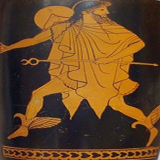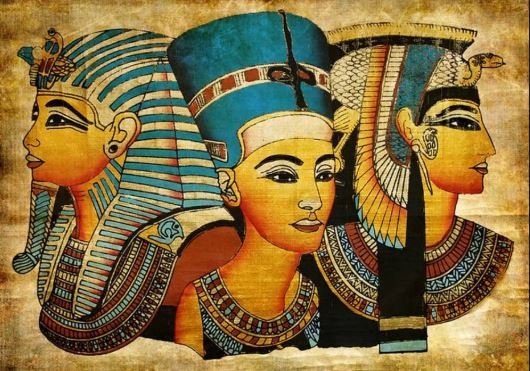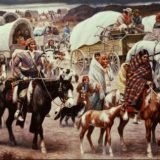The Capitoline Museums
The Capitoline Museums are a renowned collection of art and archaeological museums located in Piazza del Campidoglio on Rome’s Capitoline Hill. With historic roots dating back to the Renaissance, the museums are housed in the Palazzo dei Conservatori and Palazzo Nuovo, structures designed under Michelangelo’s masterful urban planning of the piazza in 1536. As a symbol of Roman cultural and political heritage, the Capitoline Museums display treasures from ancient Rome and beyond, celebrating the city’s enduring influence on Western civilization.

The Piazza del Campidoglio, situated atop the Capitoline Hill.
Historical Origins
In 1471, Pope Sixtus IV established the foundation of the Capitoline Museums by donating a collection of ancient bronzes, including the famed Capitoline Wolf and the colossal statue of Constantine. This act symbolized a restitution of Roman heritage, transferring these treasures from the Lateran Palace to the Capitoline Hill.
In 1734, Pope Clement XII opened the Capitoline Museums to the public, making them the first museums accessible to ordinary people.
During the Renaissance, additional contributions enriched the collection. Notable pieces such as the gilded Hercules and the Marcus Aurelius reliefs were integrated into the museum’s growing repository. Michelangelo’s architectural designs for the Capitoline Hill further elevated the site’s prestige, creating a harmonious interplay between art and public space.
Expansion in the 18th Century
In 1734, Pope Clement XII officially opened the museums to the public, making them the world’s first public art museums. This pivotal moment democratized access to art, allowing citizens to experience the grandeur of Rome’s artistic and historical legacy firsthand.
Clement XII’s acquisition of Cardinal Alessandro Albani’s antiquities collection significantly enhanced the museum’s holdings. Masterpieces such as the Capitoline Antinous and the Dying Gaul became central attractions, solidifying the museums’ reputation.
Collections and Exhibits
Sculpture and Antiquities
The Capitoline Museums house an unparalleled collection of ancient sculptures, including:
- Equestrian Statue of Marcus Aurelius: A rare surviving bronze statue from antiquity, celebrated for its majesty and historical significance.
- Capitoline Wolf: The iconic symbol of Rome, depicting the legendary she-wolf suckling Romulus and Remus.
- The Dying Gaul: A poignant marble depiction of a defeated Gallic warrior, epitomizing Hellenistic artistry.

The Capitoline Wolf
Painting and Decorative Arts
The Pinacoteca Capitolina features works by Renaissance and Baroque masters such as Caravaggio, Titian, and Rubens. Highlights include:
- Caravaggio’s “John the Baptist”: An evocative portrayal showcasing the artist’s mastery of light and shadow.
- Guercino’s “Burial of St. Petronilla”: A monumental work celebrating Roman martyrdom.
Coins, Jewelry, and Epigraphy
The Medagliere Capitolino displays an extensive collection of ancient coins and jewelry, while the Galleria Lapidaria features inscriptions from Rome’s storied past, offering insights into its social, political, and economic life.
Architectural Highlights
Palazzo dei Conservatori
Renovated under Michelangelo’s guidance, the Palazzo dei Conservatori features grand halls adorned with frescoes and sculptures. Key attractions include:
- The Hall of the Horatii and Curiatii: Site of significant historical ceremonies, including the signing of the Treaties of Rome.
- The Conservators’ Apartment: A series of richly decorated rooms housing significant artworks and artifacts.
Palazzo Nuovo
Built in the 17th century, the Palazzo Nuovo mirrors the design of the Palazzo dei Conservatori. It houses:
- Hall of the Emperors: A collection of Roman imperial busts tracing the evolution of portraiture.
- Hall of the Philosophers: Busts of ancient thinkers, including Socrates and Homer.

Front view of the Palazzo Nuovo
The Tabularium
Located beneath the Palazzo Senatorio, the Tabularium was ancient Rome’s state archive. Today, it provides a stunning view of the Roman Forum and serves as a reminder of the Capitoline’s political significance.
Modern Developments
In recent decades, the Capitoline Museums have expanded and modernized. The opening of the Centrale Montemartini, a former power station repurposed as an exhibition space, reflects a fusion of industrial and classical archaeology. Additionally, the Exedra of Marcus Aurelius, inaugurated in 2005, showcases the iconic equestrian statue in a contemporary setting.
The Capitoline Museums continue to embrace technology to enhance accessibility and preservation. Recent initiatives include digital reconstructions, virtual tours, and advanced conservation techniques, ensuring that these treasures remain a source of inspiration for future generations.
Did you know…?
The Hall of the Horatii and Curiatii in the Capitoline museums hosted the signing of the Treaties of Rome in 1957, foundational documents of the European Union.
Cultural and Historical Significance
As the world’s oldest public museum, the Capitoline Museums embody the enduring legacy of Roman art, culture, and innovation. By preserving and showcasing artifacts spanning centuries, they provide a window into the achievements of ancient civilizations and their lasting impact on the modern world.
When visiting the Capitoline Museums
Located at the heart of Rome, the Capitoline Museums are easily accessible and offer a range of amenities, including guided tours and multimedia exhibits. Visitors can explore the museums’ extensive collections while enjoying panoramic views of the Eternal City.
Frequently Asked Questions

What is the historical significance of the Capitoline Museums?
Established in 1471 by Pope Sixtus IV, they are the world’s oldest public museums, showcasing art and artifacts from ancient Rome, the Middle Ages, and the Renaissance.
Who designed the Piazza del Campidoglio?
Michelangelo Buonarroti designed the trapezoidal Piazza del Campidoglio in 1536, and its layout was executed over 400 years.

A portrait of Michelangelo.
What are some key artifacts housed in the Capitoline Museums?
The museums feature the Equestrian Statue of Marcus Aurelius, the Capitoline Wolf, the Dying Gaul, and Bernini’s Bust of Medusa, along with works by Caravaggio, Titian, and Rubens.
Why is the Capitoline Wolf significant?
The bronze statue, symbolizing Rome, depicts the legendary wolf suckling Romulus and Remus. It is believed to be Etruscan but may date back to the 12th century.
What is the Exedra of Marcus Aurelius?
It is a glass-enclosed wing added in 2005, showcasing the original Equestrian Statue of Marcus Aurelius and other significant artifacts.
























